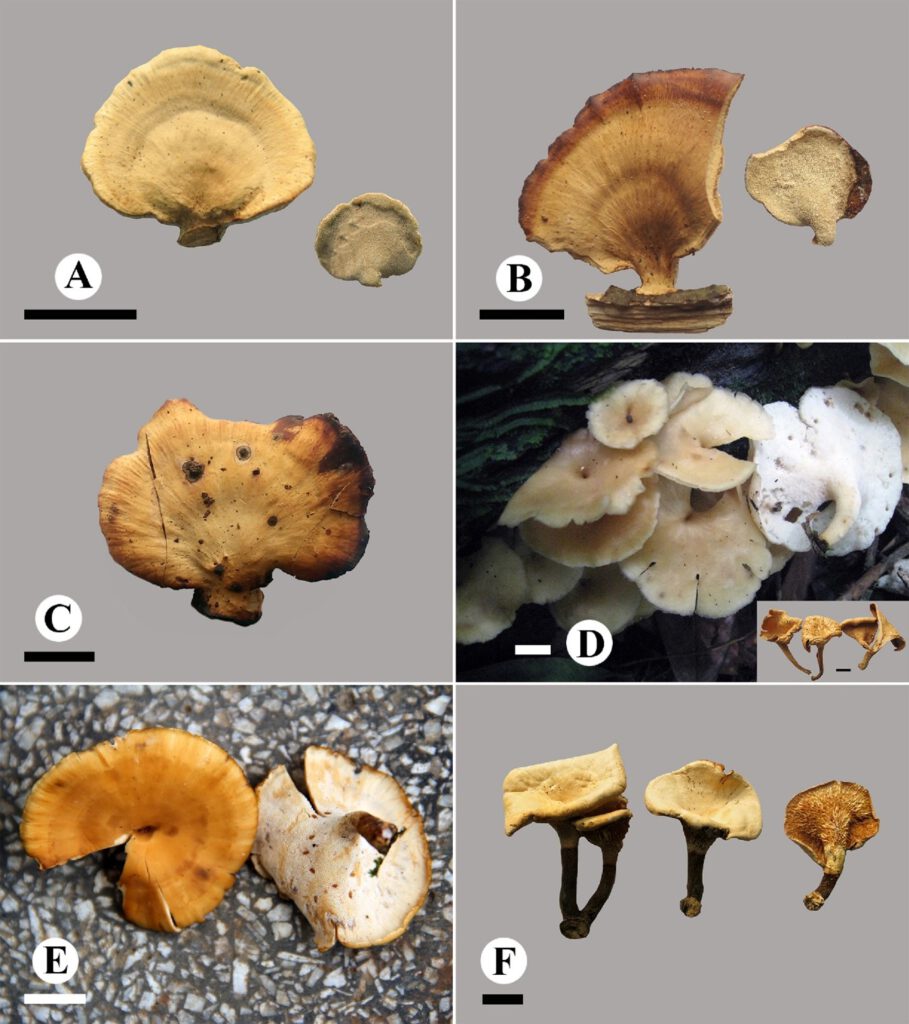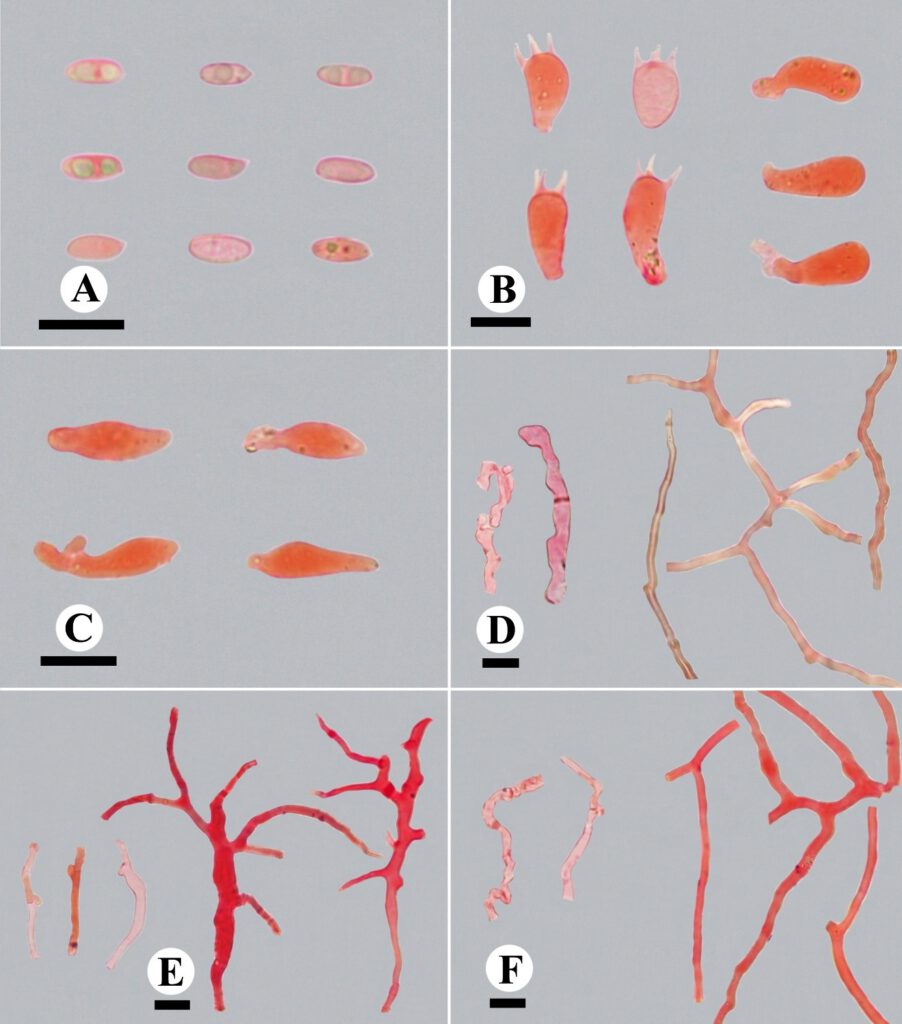Picipes nigromarginatus B.K. Cui, Xing Ji & J.L. Zhou, sp. nov.
MycoBank number: MB 559400; Index Fungorum number: IF 559400; Facesoffungi number: FoF 10648;
Description
Basidiomata – Annual, laterally stipitate, solitary, coriaceous when fresh and hard corky when dry. Pilei fan-shaped to semicircular, projecting up to 2.2 cm long, 3.4 cm wide and 3 mm thick at base. Pileal surface festucine to honey-yellow when fresh, becoming reddish brown when dry, glabrous, zonate, with radially aligned stripes; margin black, straight. Pore surface greyish buff when dry; pores subcircular, 7–9 per mm; dissepiments thin, entire. Context buff and woody hard corky upon drying, up to 2 mm thick. Tubes clay brown and hard corky upon drying, less than 1.5 mm thick, decurrent on one side of the stipe. Stipe short, concolorous with pileal surface, glabrous, up to 5 mm long and 4 mm in diam.
Hyphal structure – Hyphal system dimitic; generative hyphae bearing clamp connections; skeleto-binding hyphae IKI–, CB+; tissues unchanged in KOH.
Context – Generative hyphae infrequent, colorless, thin-walled, rarely branched, 2–6.5 μm in diam; skeleto-binding hyphae dominant, colorless, thick-walled with a wide to narrow lumen, moderately branched, interwoven, 1.5–4.8 μm in diam.
Tubes – Generative hyphae frequent, usually present near hymenium, colorless, thin-walled, 1.8–4.2 μm in diam; skeleto-binding hyphae dominant, thick-walled with a wide to narrow lumen, with dendroid branches, strongly interwoven, 1.2–6.6 μm in diam. Cystidia absent; cystidioles frequent, subulate, 14.2–17.2 × 4.7–5.5 μm. Basidia clavate, with a basal clamp connection and four sterigmata, 11.4–18.7 × 6.2–7.9 μm; basidioles in shape similar to basidia, but slightly smaller.
Stipe – Generative hyphae infrequent, colorless, thin-walled, rarely branched, 1.8–5.1 μm in diam; skeleto-binding hyphae dominant, colorless, thick-walled with a narrow lumen to solid, moderately branched, interwoven, 1.3–5.1 μm in diam.
Basidiospores – Basidiospores cylindrical, colorless, thin-walled, smooth, frequently bearing one or two guttules, IKI–, CB– or slightly CB+, (5.2–)5.6–6.9(–7.4) × 2.3–3(−3.2) μm, L = 6.31 ± 0.55 μm, W = 2.64 ± 0.22 μm, Q = 2.03–2.87, Qm = 2.4 ± 0.2 (n=37/1).
Material examined: CHINA, on fallen angiosperm branch, 25 October 2009, B.K. Cui, Cui 8113 (BJFC, holotype ).
Distribution: Subtropical regions of China.
Sequence data: Cui 8113: ITS: KX900062.1 (ITS4/ITS5); LSU: KX900178.1 (LROR/LR7); nSSU: KX900288.1 (PNS1/NS41); mtSSU: KX900244.1 (MS1/MS2); EF1a: KX900365.1 (983/1567R)
Fig. 2–B Basidiomata of Picipes nigromarginatus (Cui 8113). Scale bars: 1 cm. Fig. 8 Microscopic structures of Picipes nigromarginatus. (A): Basidiospores; (B): Basidia and basidioles; (C): Cystidioles; (D): Hyphae from context; (E): Hyphae from trama; (F): Hyphae from stipe. Scale bars: A-F = 10 μm.

Fig. 2

Fig. 8
